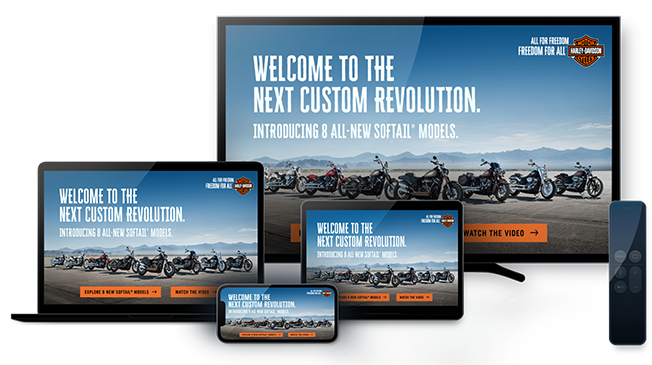Ads Can Stress People Out, Especially Around the Holidays. Here’s How Brands Can Change That.

Perhaps unsurprisingly, advertising is a contributing factor. New research from Aprimo found that 58% of consumers say the onslaught of holiday marketing stresses them out – countdowns to the number of shopping days left until Christmas, or reminders that post-Thanksgiving deals are fleeting, can understandably induce anxiety.
“People notice a huge surge in marketing content around the holidays, and this is a double-edged sword,” Aprimo CEO Erik Huddleston explained. “It drives people to find deals and make more purchases, but brands also run the risk of overdoing it and turning people off, leading to consumers unsubscribing from email lists or developing a negative impression of a brand.”
Or, as Intermark Group CEO Jake McKenzie wrote in Adweek, “Extreme periods of stress change how we think — we begin to process information as if we are in a state of fear.”
That role of stress as a factor in advertising and its effectiveness is a curious one. “Stress spending” – making impulse purchases to alleviate stress or anxiety – is a well known phenomenon, with 52% of respondents to a survey saying they’ve partaken in the practice, and that number goes up to 68% for millennials. But it’s not a successful shortcut to customer loyalty or advocacy in our post-omnichannel world. The same survey says that 83% of stress spenders have regretted their impulse spending. You’re not going to make a repeat purchase if you’re regretful or embarrassed – much less tell your friends and family about it.
Plus, research from Yahoo in 2017 found that advertising can be 40% more effective when it reaches consumers who are in a good mood. So here’s a question for marketers: How much more effective could your advertising be if it aimed to truly alleviate consumer stress, rather than elevate it or provide a quick fix?
At Infillion, we have some ideas.
Harvard Business Review said it bluntly in 2020: “Advertising makes us unhappy.” But the real problem is that consumers are seeing too many ads, and they’re too interruptive. Marketing Dive found that 52% of consumers say that if they see an ad too many times, it hurts their perception of the brand. And in the battle for scarce consumer attention, the American Marketing Association found, advertisers responded with louder and higher-energy TV commercials – which consumers didn’t like, especially when they were trying to chill out. In short, if consumers are only paying attention to an ad because they have no way of avoiding it, brands aren’t really earning that attention.
The Infillion solution: Getting the right kind of attention – the kind of attention that consumers consciously choose to provide – is key. Fine-tuned targeting, particularly with first-party data that users provide proactively, can ensure that your ads are reaching the right audience without needing to rely on the heavy frequency that can make already stressed-out consumers tune out. Plus, you can offer them the option to see fewer ads by opting into an interactive experience that maximizes brand lift in less time. (That’s what Infillion’s TrueX technology does.)
Content that lends a helping hand.
We’re bombarded with so many ads that it’s difficult to pay attention to them all. But – speaking of interaction – making a video ad interactive boosts the amount of time consumers spend with it by 47%, according to IPG Media Lab. Maybe that’s because interactivity can be fun (think branded Tetris-inspired games) but it can also help provide more information that’s actually helpful rather than just a sales message. Around the holidays, that can seal the deal.
Consider this: Rather than just reminding you that there are only so many days left until Thanksgiving, an interactive ad for a CPG food or beverage brand can help buyers out by offering recipes (if it’s on TV, an easy QR code snap can ensure viewers can access it later). A mobile rich media ad for a wine brand can offer a store locator for easier buying. Or, for indecisive shoppers, a product exploration or quiz can help them figure out what they’re really looking for.
The Infillion solution: Making ads interactive can seem daunting, but Infillion’s Creative Studio offers Blueprints, a set of frameworks that can take a brand’s existing creative assets and turn them into any number of engaging interactive units, from quizzes to multi-video experiences, in a fraction of the usual turnaround time.
Making gifting easier.
While impulse shopping to alleviate stress isn’t great for creating customer loyalty, an easy path to purchase is perfect for last-minute gifts. After all, 56% of consumers say holiday gifting stresses them out. And stressed-out consumers can find it difficult to focus, which means that they might see an ad for a product that would make a great gift for one of their loved ones but then completely forget to search for it later. (Being bombarded with more and more ads for other products probably doesn’t help.)
The Infillion solution: With shoppable ads like Infillion’s ShopX, viewers can add an item to a shopping cart at any number of retailers directly from the ad. Shoppable ads are also great for purchasing gift cards, which consistently rank among the most popular (and most desired) holiday gifts.
Subscribe to our blog:
Related Posts:

The New Face Of Awards Season Ad Campaigns
The inimitable Moira Rose of Schitt’s Creek famously said that her favorite season is “awards.” As millions of football fans nationwide wind down from their big game, the playoffs are still in full swing for cinephiles — and it’s anyone’s guess who will win this race....

Off-Site Channels: Retail Media’s Next Big Opportunity
Imagine this: A shopper browses a retailer’s website for the first time, checking out the array of products but leaving without making a purchase or signing up for emails. Traditionally, that retailer’s chance to influence the shopper might have ended there. But now,...

Spring Sports Are Here. Are Your Ads Ready?
With the Super Bowl in the rear view mirror, all eyes turn to spring sports. Particularly the eyes of advertisers looking to reach these highly captivated audiences. From March Madness to MLB Opening Day to the growing US soccer audiences for MLS and NWSL, brands have...
Let's Connect

